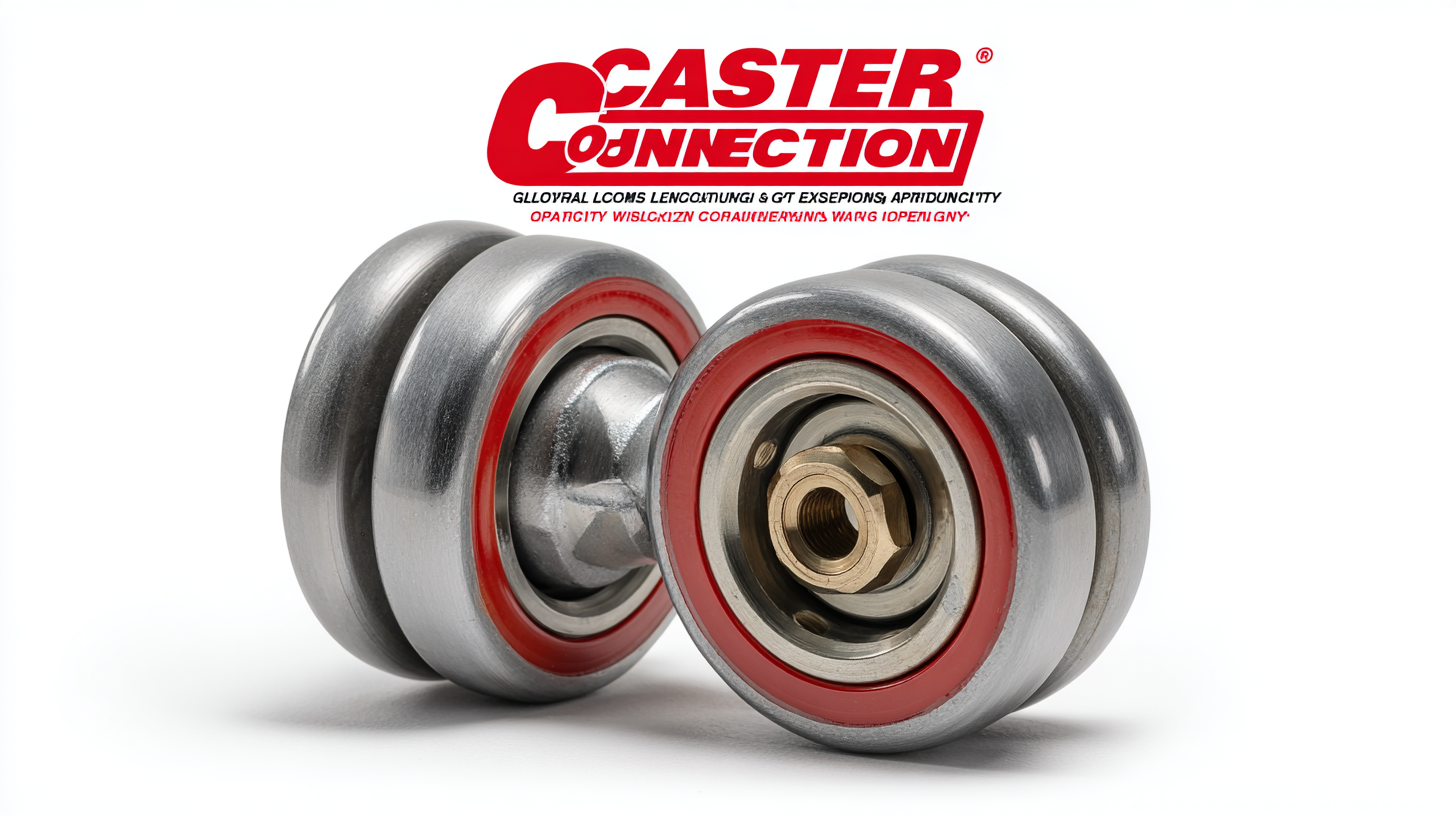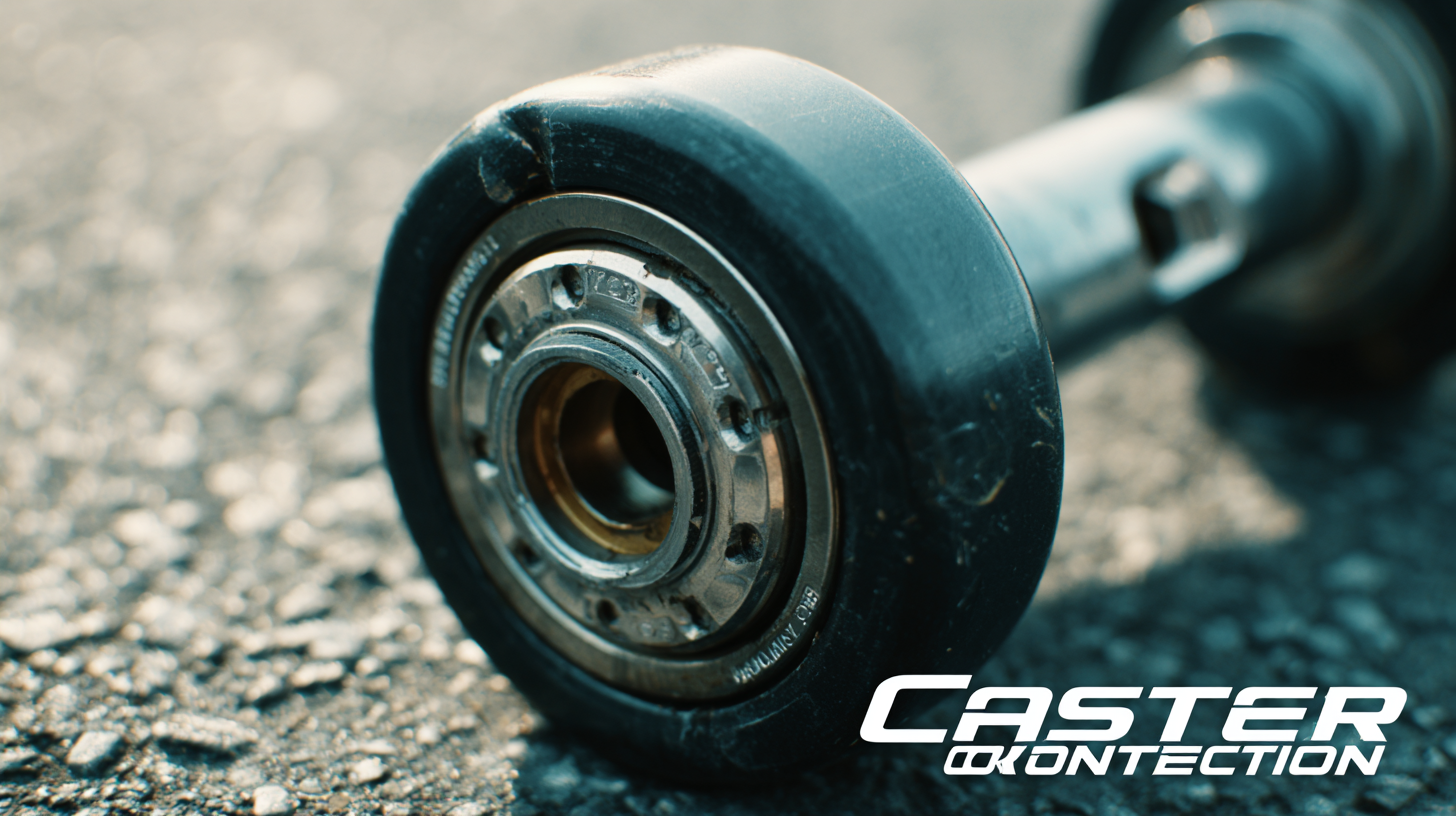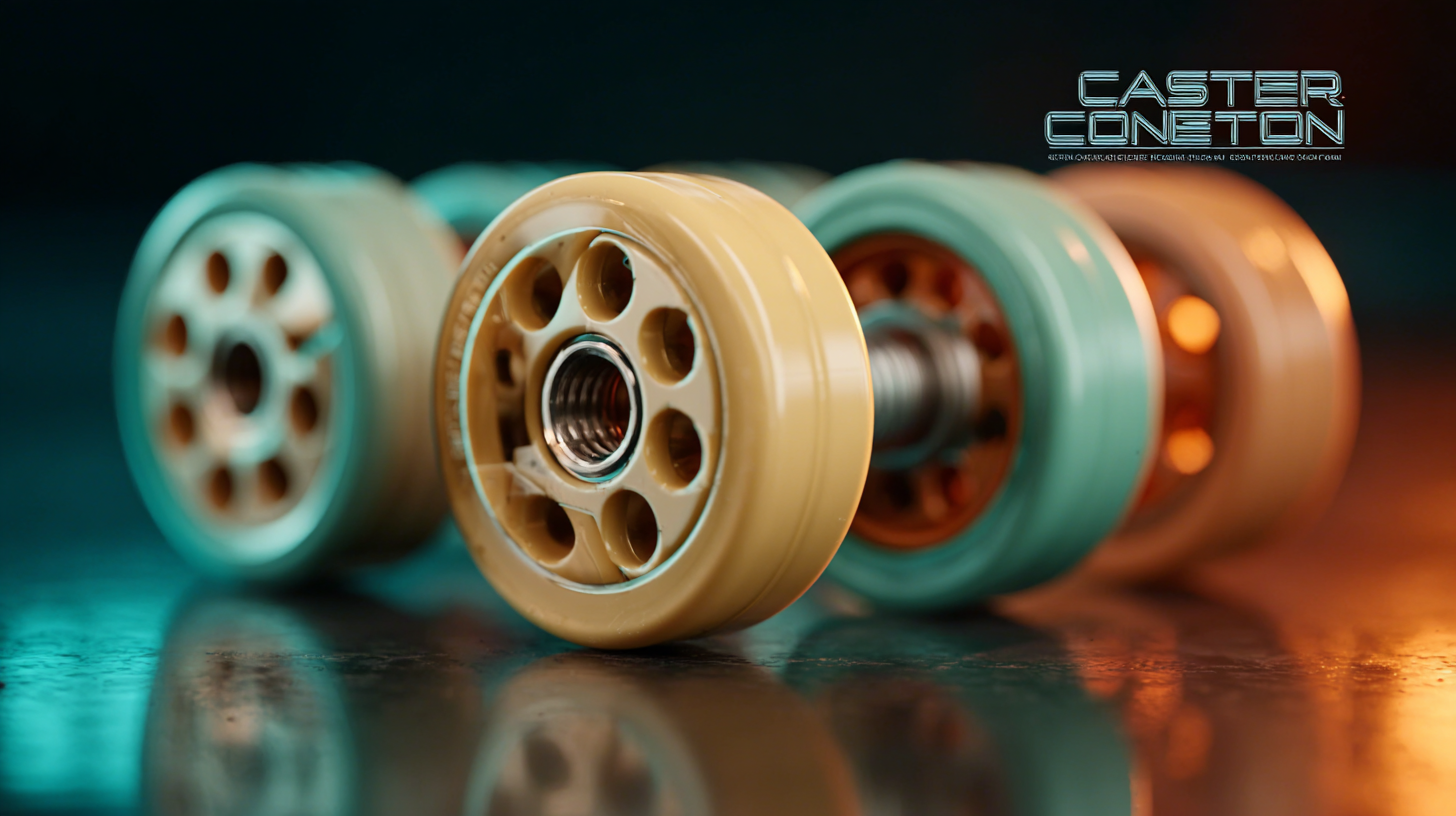
Global Leader in Caster Connection Wheels Manufacturing for Export Quality and Innovation
In today's fast-paced industrial landscape, the demand for reliable and innovative transportation solutions has never been higher, making Caster Connection Wheels a crucial component in various applications worldwide. As a global leader in caster manufacturing, we pride ourselves on offering a diverse range of products that cater to the unique needs of different industries.

From heavy-duty casters designed for industrial machinery to lightweight options perfect for furniture and appliances, understanding the characteristics and appropriate applications of each type is essential for optimizing performance and ensuring safety.
In this blog, we will explore the unique features of various caster products and offer insights on how to select the right wheels for your needs, helping you stay ahead in quality and innovation.
Comparison of Caster Wheel Materials: Performance and Durability in Industry Standards
When it comes to caster wheels in industrial applications, the choice of materials plays a pivotal role in determining performance and durability. The most common materials used for caster wheels include rubber, polyurethane, nylon, and metal, each offering unique benefits tailored to specific environments. Rubber wheels are praised for their shock-absorbing properties, making them ideal for uneven surfaces and reducing noise during operation. However, they may be less resilient under heavy loads compared to other materials.
On the other hand, polyurethane wheels provide an excellent balance of durability and performance. They are designed to withstand heavier loads while minimizing floor damage, making them an optimal choice for warehouses and manufacturing facilities. Nylon wheels, known for their resistance to chemicals and moisture, are often favored in environments where spills are a concern. Lastly, metal wheels are renowned for their strength and load-bearing capacity, suitable for extreme conditions but can sometimes compromise maneuverability. Understanding the distinct characteristics of these materials is essential for selecting the right caster wheels that meet industry standards and enhance operational efficiency.
Analyzing Export Quality: How Global Leaders Ensure Superior Caster Connection Wheels
In today's competitive market, export quality plays a pivotal role in the manufacturing of caster connection wheels. Leading manufacturers are continuously innovating their processes to ensure that their products not only meet international standards but also exceed customer expectations. This dedication to quality is evident in the rigorous testing and selection of materials, particularly the use of advanced aluminum alloys that enhance performance and durability.
The global demand for caster connection wheels is on the rise, driven by various industries seeking reliable, high-performance solutions for their operational needs. The projected growth of the aluminum alloy wheel market underscores this trend, with an anticipated worth of USD 33.2 billion by 2033. Companies that prioritize innovation and quality in their manufacturing processes are well-positioned to capture a significant share of this expanding market and maintain their status as global leaders in the industry. As they adapt to emerging trends and consumer preferences, the focus on export quality remains a cornerstone of their strategic initiatives.
Global Leader in Caster Connection Wheels Manufacturing for Export Quality and Innovation
| Metric | Value | Notes |
|---|---|---|
| Production Capacity (units/year) | 500,000 | Includes all types of caster connection wheels |
| Export Markets | 60+ | Includes North America, Europe, Asia |
| R&D Investment (annual) | $2 million | Focus on product innovation and quality improvement |
| Customer Satisfaction Rate | 95% | Measured through annual surveys |
| Quality Certifications | ISO 9001, CE | Demonstrates commitment to high-quality manufacturing standards |
| Warranty Period | 3 years | Coverage against manufacturing defects |
| Sustainability Initiatives | 100% recyclable materials used | Aim for a reduced carbon footprint |
Innovation in Caster Wheel Design: A Comparative Study of Leading Manufacturers
In the world of caster wheel design, innovation is key to enhancing functionality across various applications. A recent study focuses on a cutting-edge caster wheel mechanism that significantly boosts the high-step overcoming capability of mobile robots. This leap in technology not only enhances the performance of robotic systems but also sets the groundwork for industrial applications where mobility over obstacles is critical.
When exploring the landscape of caster wheel manufacturing, it becomes evident that understanding the differences among leading manufacturers is crucial. Many companies emphasize durability and ease of movement; however, those investing in innovative designs like the newly introduced caster mechanism stand to gain a competitive edge. Evaluating performance specifications as well as design uniqueness can lead to optimal choices for businesses reliant on high-quality caster wheels.
Tips: When selecting caster wheels for industrial use, consider the specific movement requirements of your equipment. Look for designs that offer superior obstacle navigation. Additionally, keeping abreast of the latest innovations ensures you choose products that enhance efficiency and reduce operational challenges.

Market Trends: The Rise of Eco-Friendly Caster Wheels in Global Exports
The global demand for eco-friendly caster wheels has witnessed significant growth, with recent industry reports indicating a surge in environmentally conscious consumer preferences. According to a market analysis published by Research and Markets, the eco-friendly wheels segment is anticipated to expand at a compound annual growth rate (CAGR) of 6.5% over the next five years. This trend is driven by both regulatory pressures and a shift in consumer attitudes towards sustainability, compelling manufacturers to innovate in materials and design.
As companies embrace greener manufacturing processes, incorporating recycled materials, such as polyurethane and thermoplastics, becomes essential. This not only reduces carbon footprints but also appeals to exporters seeking certifications and compliance with stringent environmental regulations. Firms that adopt eco-friendly practices report not just a boost in marketability but also cost savings in production.
Tip: When selecting caster wheels for export, consider investing in products that prioritize recyclable materials. This strategic choice aligns with sustainable practices and meets the growing consumer demand for environmentally friendly options. Additionally, ensure that your suppliers adhere to international eco-labels, as this compliance enhances credibility and expands market reach.
Cost vs. Quality: Balancing Performance and Pricing in Caster Wheel Manufacturing
In the competitive world of caster wheel manufacturing, finding the right balance between cost and quality is paramount. High-quality caster wheels not only enhance mobility but also improve the overall efficiency of operations. However, manufacturers often grapple with the challenge of keeping production costs low while delivering products that meet stringent performance standards. This balancing act is essential for businesses aiming to stand out in the international market.

When it comes to cost vs. quality, one effective strategy is to invest in high-grade raw materials that ensure durability without significantly inflating costs. For instance, using advanced polymers can improve the longevity of wheels without a substantial increase in the price point. Additionally, collaborating with experienced suppliers can lead to better negotiations on bulk purchases, which in turn can help maintain quality while keeping costs manageable.
Another tip for manufacturers is to implement systematic quality control measures throughout the production process. Regular inspections and tests can prevent defects and reduce losses from rework, ultimately driving down costs and enhancing product quality. By prioritizing both quality and cost-effectiveness, manufacturers can cultivate a reputation for excellence in caster wheel production while maintaining a competitive edge in pricing.
